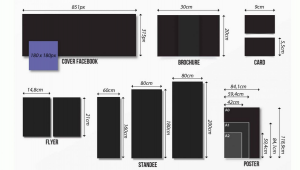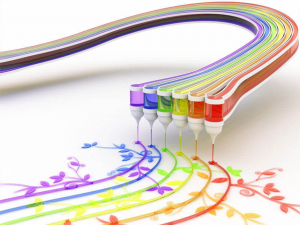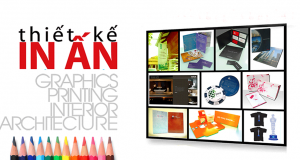Ngày đăng: 02/06/2021
Print design is one of the jobs that most designers have to get acquainted with, contact and perform. Offline communication is important for every business, and print is the key to the success of that communication. To make a beautiful publication, the designer needs to understand the following printing characteristics.
In print design, designers usually should use Adobe Illustrator tools instead of Photoshop. Because Illustrator is built on a vector platform, the colors display are very nice and real when printed, you can use it to draw everything you want in the most detailed and accurate way, expressing every idea well such as logo design, name card design, brochure, flyer, leaflet, label packaging, banner design, web interface, icon, background, fashion design …
 2. Size
2. SizeSize is a very important element of print design. A nice design but wrong in size, it can not be used. Therefore, you need to avoid setting the design file size to be smaller or out of proportion to the actual desired size after printing. You can print an A3 size design on A4 size paper, but not vice versa. Especially in case of your design has images in it, the right size will be even more important to make sure your images show clearly or not.
Common sizes in print design:
– A1: 59.4cm x 84.1cm
– A3: 29.7cm x 42cm
– A4: 21cm x 29.7cm
– A5: 14.8cm x 21cm
– Standee: 60cm x 160cm; 80cm x 180cm
– Brochure: 20cm x 30cm
 3. Resolution
3. Resolution
Most beginners make mistake of placing low-resolution images in their designs. The resolution of the image must be consistent with the size of the publication to keep the sharpness of the publication after printing. For example, images with a small size of 300x450px when printed on A5 or A4 size paper can meet the resolution, but when placing it on A2, A1 size, make sure that image after printing will be broken. So, to ensure your images look as sharp as possible, choose images in designs with the lowest resolution of 300ppi!
The design of your print needs to use the CMYK color system to ensure that the product after printing will display the most accurate color. Typically, printers are based on four ink colors: blue (Cyan), lotus pink (Magenta), yellow (Yellow) and black (Key – black). Your design blueprints in color plus three colors (Red), green (Green), blue (Blue) – the RGB color system and then printed will cause your design to display incorrect colors, and it’s easy to turn that design into something ugly..

You know, every file has its own specific application. For printing, you should use high value archival file types such as PDF and TIFF. Printers now mostly print on these two formats, but you can still use .AI, .PSD, etc. files to print directly without having to export to PDF or TIFF. .
Similar to when you align 2-2-3-2 in Word, the design products after printing must go through the process of trimming, stapling, etc. You also need to set the margin for it just like for text. copy, to avoid cropping and losing your design content. With the offset of the design, you should set within 3-5mm.
Fonts in the design are easy to change the format when switching between computers that are incomplete. Therefore, before printing, you should convert the text into an outline format to avoid basic but extremely serious errors such as changing the font, changing the content, … When designing, leaving the text format to help. You easily change the font, change the content. However, it also helps others to do that. So, when you are sure of the content of your information, switch the text to outline mode now!
Similar to text, this is a job you need to do before exporting the file to print. The habit of linking images helps to make your design file less burdensome, but before sending it to print if you don’t embed the image, it is easy for your file to lose all of the image or image quality in low quality. This will completely ruin your design, so be very careful!

With the above 8 notes, hopefully the designers will come out with complete print design products, no errors and keep in mind these notes, making it a design habit of yourself!